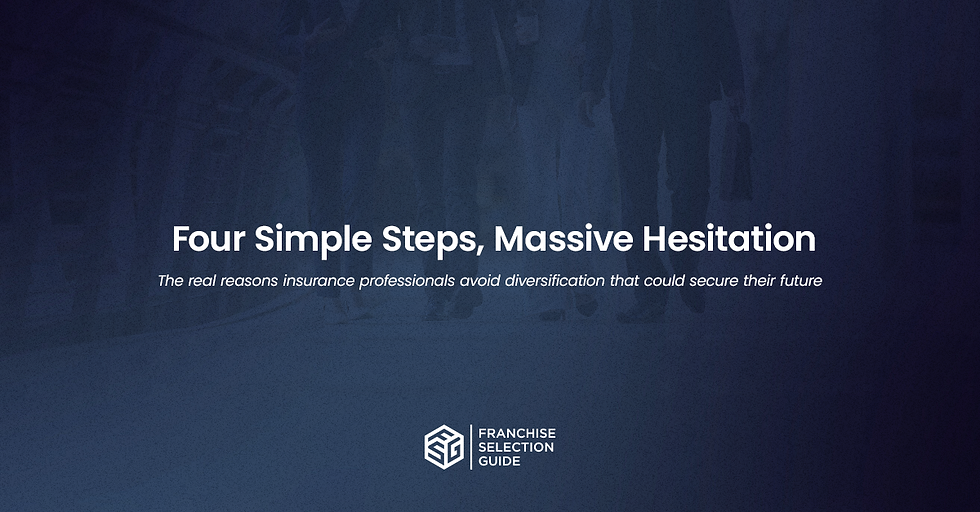Tired of Insurance Industry Changes? How to Explore Franchise Ownership Without Losing Your Income
- Matt Tiefenbrunn

- May 31
- 3 min read
If you’ve been in insurance for a few years, you’ve probably noticed the pattern.
Commission rates change. Bonus programs get restructured. Territory rules shift. But expectations keep growing.
You’ve done the work, built your book, and led your team. Still, it can feel like your success is tied to decisions you don’t control. That’s why many insurance agents are starting to explore franchise ownership. Not to walk away from their book but to build a second stream of income with more long-term value.
If that’s been on your mind, here’s how to explore franchising step by step, without losing what you’ve built.
1. Carve Out Focus Time
Start by identifying when you can consistently commit a few hours per week. Look at your current workload. Is there admin work you could delegate? Are there gaps during the day where you can take a discovery call or review materials?
You don’t need full days. Even five hours a week is enough to begin exploring serious options.
2. Look for Franchise Models That Fit Your Time
Not every franchise is made for someone with a full-time book of business. You need something semi-passive, structured, and proven.
Start with franchises that:
Allow you to hire a manager
Require fewer daily owner tasks
Offer recurring revenue or low overhead
Focus on services outside of insurance or finance
Popular options among insurance agents include:
Property damage restoration
Senior care
Commercial services
B2B consulting or staffing
These models don’t require industry experience, are often scalable, and can start part-time.
3. Keep Your Book Protected
You don’t need to give up your agency. In fact, many agents continue managing their book during their first 12 to 24 months in franchising and some keep it permanently.
To do this well:
Avoid any franchise that overlaps with insurance or regulated financial services
Streamline your current workflow using automation or a virtual assistant
Make sure your new business won’t create a conflict of interest
The goal is to keep your income stable while building a new asset in parallel.
4. Know the Numbers Before You Commit
Before investing in a franchise, break down the actual costs:
Franchise fee
Startup and setup costs
Working capital for 6–12 months
Marketing
Your personal expenses during ramp-up
Build three budget scenarios:
Conservative: slow start, delayed revenue
Realistic: based on average validation data
Optimistic: based on best-performing owners
If you’re working with $50K–$100K in liquid capital and $150K+ net worth, you’re in a good position to explore multiple options.
5. Use a 90-Day Exploration Plan
You don’t need to rush or drag things out for a year. A focused 90-day plan can bring clarity without stress.
Try this:
Weeks 1–2: Get clear on your budget, timeline, and ownership goals
Weeks 3–6: Talk to franchisors, review documents, validate with current owners
Weeks 7–10: Attend discovery events, review financials, and narrow your focus
Weeks 11–12: Decide to move forward, pause, or explore alternatives
This gives structure without pressure.
6. Think in Terms of Ownership, Not Just Income
Residuals are valuable, but they’re still tied to a company’s rules. Franchise ownership offers the chance to build something you can grow, step back from, or eventually sell.
Ask yourself:
Will my current business be valuable in five to ten years?
Can I sell it? Can I scale it without more hours?
What kind of asset would give me more control?
You don’t need to leave insurance. You don’t need to gamble your income. But if you’re ready to build something more stable, now’s a good time to explore.
Book a call here to get a shortlist of franchise options based on your goals, capital, and timeline. No pressure. Just a real conversation with someone who understands both the insurance world and franchise ownership.
It starts with a conversation. Then you decide.




Comments